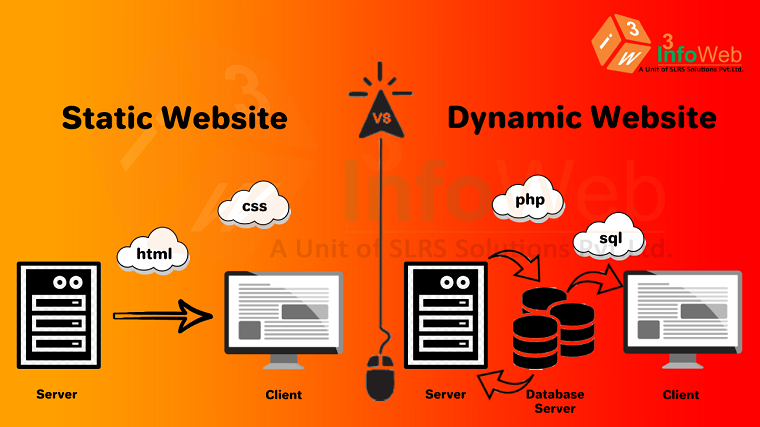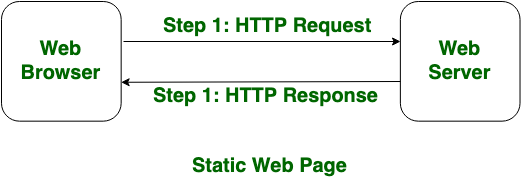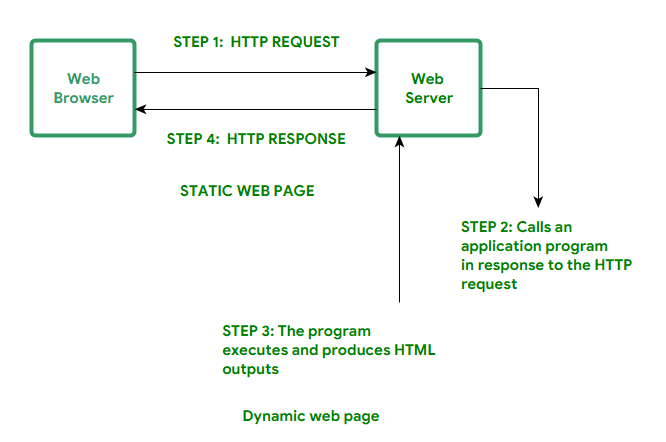
Difference between Static and Dynamic Websites
Basically, there are two different website categories- static and dynamic.
A static site is one that is normally written with plain HTML and what is shown to the user is what would be in the code of the website.
A dynamic site is just one developed using a programming language on the web server, including PHP, ASP, JSP, or ColdFusion. In such a platform, according to the actions taken by the customer, the content is called in by all the programming language from many other files or through a database.
What is a Static Website?
Static websites are very easy. It is published in HTML, JavaScript, CSS, etc. languages. When a server receives a request for a web page for websites, then the receiver uses the reply to the client with no additional process being performed. And via an internet browser, these websites have been used. Pages will stay the same on websites before anyone manually updates them.

Advantages of Static Websites: –
Flexibility is the main advantage of a static website if desired, each page can be different, to match the layout with different content, and the designer is able to place in any digital effects that a customer can ask for it on different pages in a special way. For example, an author will want a different theme for a different scene and related pages, or maybe for a number of novels, in order to compare the cover designs or the context of the storylines.
Cost is usually lesser than with a dynamic website up-front.
Disadvantages of Static websites: –
When you wish to change the content, the key issue with any static website appears. If you are familiar with HTML and the techniques of design used on the web, you must go back to the developer to make any improvements to the content. If a new page needing design feedback is required, this could be perfectly okay, but if all you want to do is alter some text, it can be a hassle for both client and designer.
Optimization is the second primary problem. If you want to sell items on your website and you have a lot of them, you can have to make custom pages for each one of them, which would take a very long time, effort, and expense.
Costing- there is a recurring cost for the content to be updated.
What is a Dynamic Website?
In languages including CGI, AJAX, ASP, ASP.NET, etc., Dynamic websites are written. The content including its pages is different with different visitors on dynamic websites. It requires more time than a static website page to display. Dynamic websites are used when information, including share prices, weather data, etc., is frequently updated.

Advantages of Dynamic websites: –
The key benefits of dynamic sites are that you really can quickly convert data in an organized and structured way by linking them to databases to develop product pages or categories of similar items arranged in a number of different ways, depending on how the user wants to display them.
This user to integrate into a database to ensure that a data management solution – an interface that allows the consumer to input and manages data via a web-based set of administration pages – can also be created. The material may be text, with categories, requirements, short and long descriptions, photos, etc. for their websites and images to go along with the text, or products in their product range. It can be as simple or as complex as needed by the customer in each of these situations.
Unless a change in the original design or an external capability is introduced, there are few or no ongoing costs.
Disadvantages of Dynamic websites: –
Since many of the pages are simply a prototype onto which data and content are poured to create several pages of a similar nature, the design of a dynamic site is more fixed than static. So all the product pages, for example, are basically the same page layout with different data being displayed. Although it is generally very restricted to create any customization capability, such a selection from a set of pre-defined options is possible. Typically, individual layout modifications for unique pages are not possible.
Initially, costs are higher than for a static site, and new functionality can also cost more, particularly if it is something that was not initially designed and needs the core code or database to be re-written.